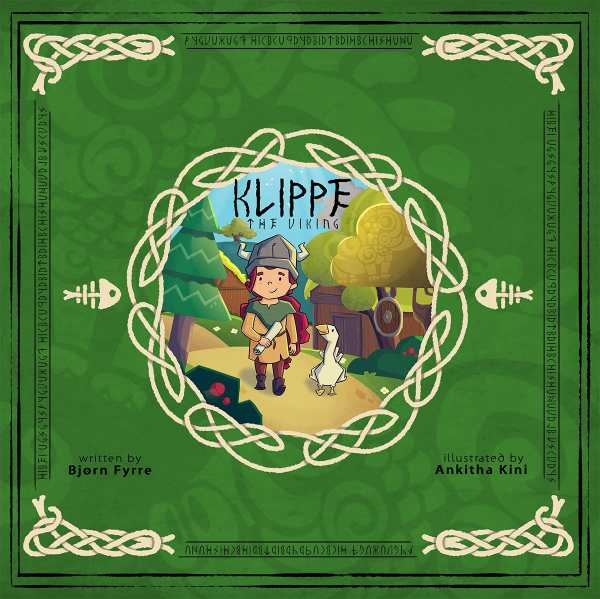Klippe the Viking
Through relatable situations, the picture book Klippe the Viking encourages the verbalization of difficult feelings.
In Bjorn Fyrre’s picture book Klippe the Viking, a little girl grapples with big feelings. Through uplifting interactions with her peers, she discovers that there’s merit both in questioning the status quo and in being vulnerable about the insecurities that crop up in the process.
Klippe, who struggles with feelings of inadequacy, wonders if she should even be in school. Her anxieties are compounded by the knowledge that her interests differ vastly from those of other Vikings. But with a few nonjudgmental nudges from her classmates Kanin and Tyr, Klippe learns that there’s no shame in asking for help, that everyone adds value in different ways, and that it is possible to slice through her limiting self-beliefs.
The young Viking’s troubles are presented as a gateway to get children talking about their own problems. When Klippe worries about falling behind in class, she chooses to have an honest conversation with a friend who reveals that she too sometimes needs to put in extra work to understand. In such ways, Klippe challenges unhealthy thought patterns, like jumping to conclusions. In subsequent sections, Klippe questions how she fits in at school and deals with the dilemma of wanting to learn sword-fighting but wondering if she is allowed to.
However, Klippe’s conflicts are sometimes underdefined. In one instance, she watches boys spar with one another and states that she “should not” take part, though she longs to. It is left unclarified whether this has to do with her fear of not being skilled or with traditional gender norms (although Klippe’s community is shown to be led by a woman chieftain). There is also a structural inconsistency in the text at the beginning regarding why Klippe feels isolated, taking away from the intended meaning of a sentence and its impact.
But the book’s habit of repeating the lessons that Klippe learns is effective in getting the advice to sink in and be reinforced at key points. And unique artistic details—as with the inclusion of birds and rabbits—amplify the book’s illustrations with their visual variety. The patterns on the Vikings’ clothing, the greenery, and shadowy animal figures visible upon close inspection against the white backdrop of the words do the same. An empathetic companion in the form of a loyal duck is an indirect reminder that Klippe is not as alone as she thinks. Further, the typography uses a bullseye for the letter “o”—another clever touch.
Through relatable situations, the picture book Klippe the Viking encourages the verbalization of difficult feelings such as loneliness and low self-worth, rather than their suppression. It celebrates and normalizes the act of reaching out and offering or accepting kindness instead.
Reviewed by
Sriya Narayanan
Disclosure: This article is not an endorsement, but a review. The publisher of this book provided free copies of the book and paid a small fee to have their book reviewed by a professional reviewer. Foreword Reviews and Clarion Reviews make no guarantee that the publisher will receive a positive review. Foreword Magazine, Inc. is disclosing this in accordance with the Federal Trade Commission’s 16 CFR, Part 255.

